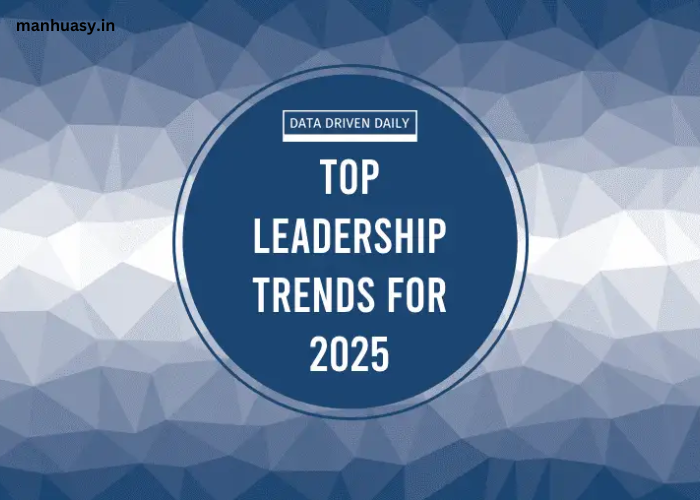In 2025, business leaders are facing new challenges and opportunities as the landscape rapidly evolves. From the integration of artificial intelligence and automation to the rise of hybrid work environments, leadership must adapt to these changes to drive sustainable growth. Effective leadership has always been the cornerstone of successful businesses, and now, more than ever, it is crucial for creating agile, innovative, and motivated teams. Whether you are running a small startup or managing a large corporation, the ability to lead effectively will determine your success in this fast-paced world. This article explores growth-boosting leadership tips for business leaders in 2025 to help you elevate your leadership skills and guide your business to new heights.
As the business world rapidly evolves in 2025, leaders are required to stay agile, innovative, and forward-thinking. Growth no longer depends solely on traditional leadership approaches. Instead, it’s about cultivating a culture of adaptability, harnessing the power of new technology, and making strategic decisions based on data-driven insights. Effective leadership is key to fostering creativity, inspiring teams, and ensuring that businesses not only survive but thrive in this competitive landscape.
Key Points:
- The future of business growth depends on visionary leadership.
- Building agile, innovative teams is essential to overcoming challenges.
- Data-driven decision-making is crucial in modern leadership.
1. Lead with Vision and Purpose
In 2025, the business environment is evolving rapidly, and leaders need a clear vision to navigate through uncertainty. Leading with a strong sense of purpose ensures that everyone within the organization is aligned with the company’s goals. When your team understands the company’s mission and feels emotionally connected to the purpose, they are more likely to be motivated and productive.
Why Vision and Purpose Are Essential for Growth
Having a clear vision helps leaders make strategic decisions, align resources, and prioritize what truly matters. A shared sense of purpose provides focus and direction, ensuring that everyone on the team is working towards common objectives. When employees can see the bigger picture, they are more likely to contribute their best work, which can drive business growth.
Real-World Example
Patagonia, a company known for its environmental activism, has built a loyal following by staying true to its mission of “using business to inspire and implement solutions to the environmental crisis.” This strong sense of purpose has not only attracted customers but also motivated employees, driving growth and success in the highly competitive retail market.
2. Build a Culture of Innovation
In 2025, fostering a culture of innovation is one of the most important leadership strategies for growth. Leaders must encourage creativity, embrace experimentation, and allow employees to explore new ideas without fear of failure. Innovation helps businesses stay ahead of competitors, improve products and services, and meet evolving customer needs.
Why Innovation Drives Business Growth
Innovation is essential for adapting to changing market conditions, technological advances, and shifting consumer demands. Leaders who prioritize innovation can create unique products or services that stand out in the marketplace. Furthermore, an innovative culture encourages collaboration and attracts top talent who are eager to contribute fresh ideas.
Real-World Example
Apple’s continuous innovation in technology, from the iPhone to the Apple Watch, has helped the company maintain its position as a market leader. By fostering a culture that encourages innovation and creative thinking, Apple continues to lead the way in the tech industry, driving growth year after year.
3. Empower and Motivate Your Team
An essential leadership skill in 2025 is the ability to inspire and empower your team. Great leaders recognize that their employees are the driving force behind business success. When employees feel empowered, trusted, and motivated, they are more likely to contribute meaningfully and go above and beyond to achieve company goals.
Why Empowering Your Team Leads to Growth
Empowerment is about giving employees the autonomy and support they need to make decisions and take ownership of their work. Motivated employees are more productive, innovative, and engaged, which leads to better performance and results. When leaders trust their teams and provide opportunities for growth, employees are more likely to remain loyal and committed to the business’s success.
Real-World Example
Zappos, an online retailer, is renowned for its employee empowerment and customer service. The company’s leadership encourages employees to make decisions on the spot to resolve customer issues, fostering a sense of ownership and pride in their work. This empowerment has contributed to Zappos’ strong brand reputation and impressive business growth.
4. Be Data-Driven in Your Decision Making
In today’s digital age, leaders have access to more data than ever before. Using data to inform decision-making can help leaders make more accurate, timely, and strategic choices. Data-driven leadership enables businesses to optimize operations, improve customer experiences, and identify new growth opportunities.
Why Data-Driven Decisions Are Essential for Growth
Data allows leaders to make informed decisions based on real insights, not just intuition. By analyzing market trends, customer behavior, and internal performance, leaders can identify areas for improvement and seize new opportunities. In addition, data-driven decisions reduce the risk of mistakes and lead to more efficient resource allocation, which ultimately drives growth.
Real-World Example
Netflix uses data-driven decision-making to personalize recommendations for users and predict what type of content will perform well. By leveraging data analytics, Netflix has been able to stay ahead of competitors and maintain its leadership in the streaming industry.
5. Cultivate Adaptability and Resilience
The business environment in 2025 is expected to be dynamic and unpredictable. Leaders must be adaptable and resilient to effectively manage through challenges and change. This means being open to new ideas, learning from mistakes, and adjusting strategies as needed. Resilient leaders inspire confidence and provide stability, even in the face of uncertainty.
Why Adaptability Leads to Business Growth
Adaptability allows leaders to pivot quickly when needed, embrace new technologies, and adjust to shifting market demands. Resilient leaders can inspire their teams to stay focused and motivated, even during difficult times. By being adaptable, businesses can continue to thrive, even in the face of unforeseen challenges.
Real-World Example
During the COVID-19 pandemic, many companies had to rapidly adapt to remote work and changing consumer behaviors. Leaders who were able to quickly pivot and implement new strategies, such as shifting to e-commerce, were able to sustain and even grow their businesses during this crisis.
6. Focus on Sustainability and Ethical Leadership
In 2025, sustainable and ethical business practices are more important than ever. Consumers, employees, and investors are increasingly looking for companies that prioritize environmental and social responsibility. Leaders who focus on sustainability and ethics are not only contributing to a better world but also gaining the trust and loyalty of their stakeholders.
Why Sustainability and Ethics Matter for Growth
Sustainable practices reduce costs, improve brand reputation, and attract customers who value corporate social responsibility. Ethical leadership builds trust, fosters a positive workplace culture, and ensures that the company is operating with integrity. Companies that embrace sustainability and ethics are more likely to build long-term success and achieve growth.
Real-World Example
Ben & Jerry’s has long been committed to environmental sustainability and social justice. Their leadership in advocating for climate change action, fair trade, and other social causes has earned them a loyal customer base and allowed the company to thrive in a competitive market.
Conclusion
As business leaders navigate the challenges and opportunities of 2025, it is clear that the leadership strategies of the past are no longer enough. To drive growth and achieve success, leaders must embrace innovation, empower their teams, make data-driven decisions, stay adaptable, and focus on sustainability. By fostering a culture of trust, vision, and purpose, business leaders can unleash the full potential of their organizations and position themselves for long-term success. In an increasingly complex and competitive world, effective leadership is the key to unlocking business growth and ensuring that your company thrives in the years to come.



